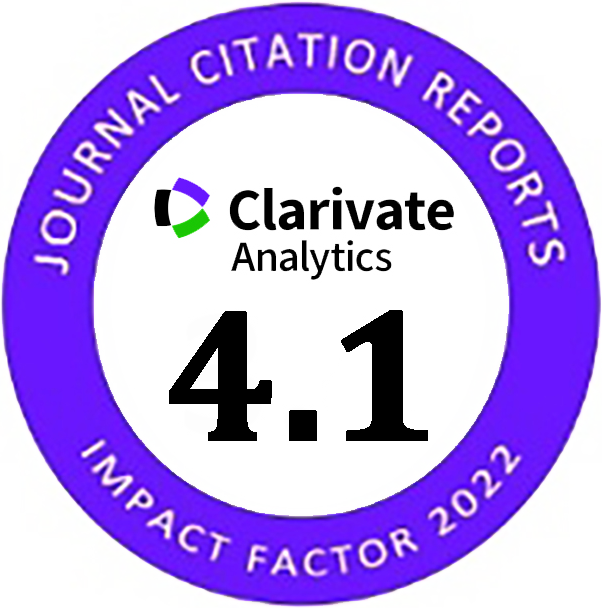Developing an ANN Based Streamflow Forecast Model Utilizing Data-Mining Techniques to Improve Reservoir Streamflow Prediction Accuracy: A Case Study
Abstract
This study illustrates the benefits of data pre-processing through supervised data-mining techniques and utilizing those processed data in an artificial neural networks (ANNs) for streamflow prediction. Two major categories of physical parameters such as snowpack data and time-dependent trend indices were utilized as predictors of streamflow values. Correlation analysis of different models indicate that, for the period of January to June, using fewer predictors led to simpler modeling with equivalent accuracy on daily prediction models. This did not hold in all periods. For monthly prediction models, accuracy was improved compared to earlier works done to predict monthly streamflow for the same case of Elephant Butte Reservoir (EB), NM. Overall, superior prediction performance was achieved by utilizing data-mining techniques for pre-processing historical data, extracting the most effective predictors, correlation analysis, extracting and utilizing combined climate variability indices, physical indices, and employing several developed ANNs for different prediction periods of the year.
Keywords
References
Abrahart, Robert J., and Linda See. "Comparing neural network and autoregressive moving average techniques for the provision of continuous river flow forecasts in two contrasting catchments."Hydrological processes 14, no. 11‐12 (2000): 2157-2172. DOI: 10.1002/1099-1085(20000815/30)14:11/123.0.CO;2-S.
Abudu, Shalamu, C. L. Cui, James Phillip King, and Kaiser Abudukadeer. "Comparison of performance of statistical models in forecasting monthly streamflow of Kizil River, China."Water Science and Engineering 3, no. 3 (2010): 269-281. DOI: 10.3882/j.issn.1674-2370.2010.03.003.
Abudu, Shalamu, J. Phillip King, and A. Salim Bawazir. "Forecasting monthly streamflow of spring-summer runoff season in Rio Grande headwaters basin using stochastic hybrid modeling approach." Journal of Hydrologic Engineering 16, no. 4 (2010): 384-390. DOI: 10.1061/(ASCE)HE.1943-5584.0000322.
Alizadeh, R., M. Majidpour, R. Maknoon, and J. Salimi. "Iranian energy and climate policies adaptation to the Kyoto protocol." International Journal of Environmental Research 9, no. 3 (2015): 853-864. DOI: 10.22059/ijer.2015.972.
Alizadeh, Reza, Mehdi Majidpour, Reza Maknoon, and Saeed Shafiei Kaleibari. "Clean development mechanism in Iran: does it need a revival?." International journal of global warming 10, no. 1-3 (2016): 196-215. DOI: 10.1504/IJGW.2016.077913.
Al-Jarrah, Omar Y., Paul D. Yoo, Sami Muhaidat, George K. Karagiannidis, and Kamal Taha. "Efficient machine learning for big data: A review." Big Data Research 2, no. 3 (2015): 87-93. DOI: 10.1016/j.bdr.2015.04.001.
Chen, X. Y., K. W. Chau, and A. O. Busari. "A comparative study of population-based optimization algorithms for downstream river flow forecasting by a hybrid neural network model." Engineering Applications of Artificial Intelligence 46 (2015): 258-268. DOI: 10.1016/j.engappai.2015.09.010.
Cheung, Sai On, C. M. Tam, and F. C. Harris. “Arbitration as an alternative dispute resolution method.” World Construction Conference, Global Challenges in Construction Industry, (2012): 23–31.
Damle, Chaitanya, and Ali Yalcin. "Flood prediction using time series data mining." Journal of Hydrology 333, no. 2-4 (2007): 305-316. DOI: 10.1016/j.jhydrol.2006.09.001.
Dastourani, M. T., A. Habibipoor, M. R. Ekhtesasi, A. Talebi, and J. Mahjoobi. "Evaluation of the design tree model in precipitation prediction (case study: Yazd synoptic station)" (2013): 14-27.
Faruk, Durdu Ömer. "A hybrid neural network and ARIMA model for water quality time series prediction." Engineering Applications of Artificial Intelligence 23, no. 4 (2010): 586-594. DOI: 10.1016/j.engappai.2009.09.015.
Fayyad, Usama, Gregory Piatetsky-Shapiro, and Padhraic Smyth. "From data mining to knowledge discovery in databases." AI magazine 17, no. 3 (1996): 37. DOI: 10.1609/aimag.v17i3.1230.
Jiang, Zhu, Hui-yan Wang, and Wen-wu Song. "Discharge estimation based on machine learning." Water Science and Engineering 6, no. 2 (2013): 145-152. DOI: 10.3882/j.issn.1674-2370.2013.02.003.
He, Zhibin, Xiaohu Wen, Hu Liu, and Jun Du. "A comparative study of artificial neural network, adaptive neuro fuzzy inference system and support vector machine for forecasting river flow in the semiarid mountain region." Journal of Hydrology 509 (2014): 379-386. DOI: 10.1016/j.jhydrol.2013.11.054.
Humphrey, Greer B., Matthew S. Gibbs, Graeme C. Dandy, and Holger R. Maier. "A hybrid approach to monthly streamflow forecasting: integrating hydrological model outputs into a Bayesian artificial neural network." Journal of Hydrology 540 (2016): 623-640. DOI: 10.1016/j.jhydrol.2016.06.026.
Kim, Tae-Woong, and Juan B. Valdés. "Nonlinear model for drought forecasting based on a conjunction of wavelet transforms and neural networks." Journal of Hydrologic Engineering 8, no. 6 (2003): 319-328. DOI: 10.1061/(ASCE)1084-0699(2003)8:6(319).
Kasiviswanathan, K. S., Jianxun He, K. P. Sudheer, and Joo-Hwa Tay. "Potential application of wavelet neural network ensemble to forecast streamflow for flood management." Journal of Hydrology 536 (2016): 161-173. DOI: 10.1016/j.jhydrol.2016.02.044.
Labadie, John W. "Optimal operation of multireservoir systems: state-of-the-art review." Journal of water resources planning and management 130, no. 2 (2004): 93-111. DOI: 10.1061/(ASCE)0733-9496(2004)130:2(93).
Liao, Shu-Hsien, Pei-Hui Chu, and Pei-Yuan Hsiao. "Data mining techniques and applications–A decade review from 2000 to 2011." Expert systems with applications 39, no. 12 (2012): 11303-11311. DOI: 10.1016/j.eswa.2012.02.063.
Moradkhani, Hamid, Kuo-lin Hsu, Hoshin V. Gupta, and Soroosh Sorooshian. "Improved streamflow forecasting using self-organizing radial basis function artificial neural networks." Journal of Hydrology 295, no. 1-4 (2004): 246-262. DOI: 10.1016/j.jhydrol.2004.03.027.
Moreno, Jimmy, Shalamu Abudu, A. Salim Bawazir, and J. Phillip King. "Comment on ‘Kişi Ö. 2009. Daily pan evaporation modelling using multi‐layer perceptrons and radial basis neural networks". Hydrological Processes 24, no. 21 (2010): 3115-3118. DOI: 10.1002/hyp.7713.
Sabzi, Hamed Zamani, James Phillip King, and Shalamu Abudu. "Developing an intelligent expert system for streamflow prediction, integrated in a dynamic decision support system for managing multiple reservoirs: A case study." Expert Systems with Applications 83 (2017): 145-163. DOI: 10.1016/j.eswa.2017.04.039.
Sabzi, Hamed Zamani. Artificial intelligence and time series based forecasting in water resources, decision modeling, and optimal selection using ranking techniques. New Mexico State University, 2016.
Saltelli, Andrea, Stefano Tarantola, Francesca Campolongo, and Marco Ratto. Sensitivity analysis in practice: a guide to assessing scientific models. John Wiley & Sons, 2004. DOI:10.1002/0470870958.
Stedinger, Jery R., Bola F. Sule, and Daniel P. Loucks. "Stochastic dynamic programming models for reservoir operation optimization." Water resources research 20, no. 11 (1984): 1499-1505. DOI: 10.1029/WR020i011p01499.
Wei, You-xing, Deng-ting Wang, and Qing-jun Liu. "Application of artificial neural network to calculation of solitary wave run-up." Water Science and Engineering 3, no. 3 (2010): 304-312. DOI: :10.3882/j.issn.1674-2370.2010.03.006.
Zamani Sabzi, Hamed, Shalamu Abudu, Reza Alizadeh, Leili Soltanisehat, Naci Dilekli, and James Phillip King. "Integration of Time Series Forecasting in a Dynamic Decision Support System for Multiple Reservoir Management to Conserve Water Sources."Energy Sources, Part A: Recovery, Utilization, and Environmental Effects Doi:10.1080/15567036.2018.1476934.
DOI: 10.28991/cej-0309163
Refbacks
- There are currently no refbacks.
Copyright (c) 2018 Hamed Zamanisabzi, James Phillip King, Naci Dilekli, Bahareh Shoghli, Shalamu Abudu

This work is licensed under a Creative Commons Attribution 4.0 International License.






